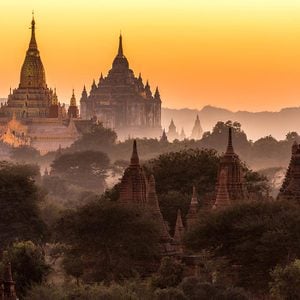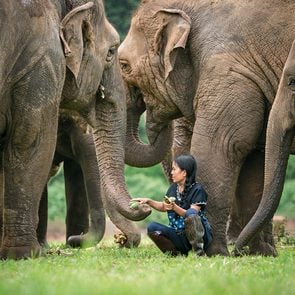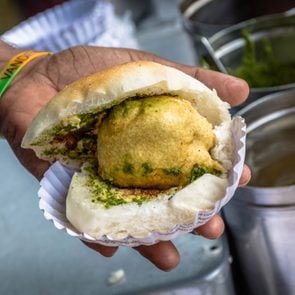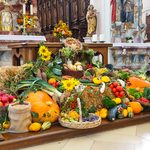On a Trek to Northern Laos, Just Getting There Is an Adventure
Why take a high-speed train to northern Laos when you can take three days to do pretty much the same trip by boat—never knowing if you’ll actually get there?
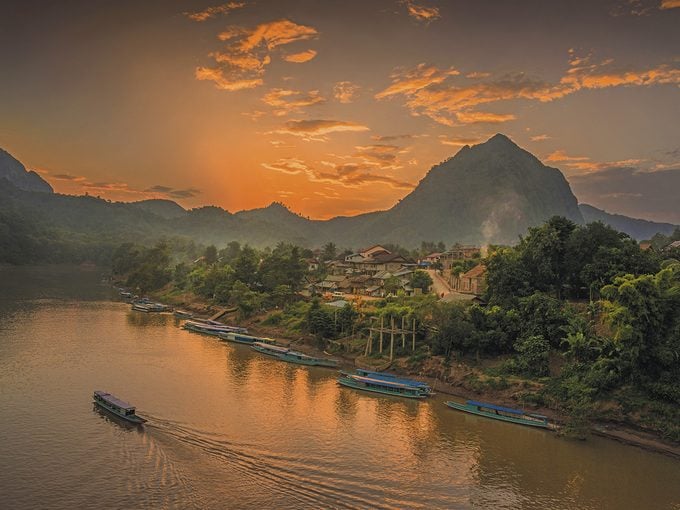
I recently read that a new high-speed train route had opened in Laos at the end of 2021. The Lao-China Railway can get you the 150 kilometres from the ancient capital of Luang Prabang north to the Chinese border in just 90 minutes. It carries more than 1.5 million passengers a year, a game-changer for a country with very little transportation infrastructure.
As someone who has visited this remote corner of Laos, I wondered: What fun is that sort of speed when you can take three days to do pretty much the same trip by boat—never knowing if you’ll actually get there?
It was the spring of 2017, and my husband, Jules, and I had just spent two weeks travelling around Laos. We had poked around the humid, sprawling capital, Vientiane, in the south and explored the fascinating Plain of Jars in the middle of the country. We were really enjoying it—the people were kind, and it wasn’t as touristy as we knew Vietnam, the country we planned to visit next, would be.
We saved Luang Prabang, Laos’s historic former capital, for last. Located at the confluence of the Mekong and the Nham Khan rivers, the UNESCO World Heritage Site was quiet, with several gilded Buddhist monasteries. Its well-preserved French colonial buildings date back to the first half of the 20th century, when Laos was part of French Indochina.
We strolled the peaceful back streets and colourful craft markets and climbed Phousi Hill to take in the view. Relaxing at a bistro across from a wat (Buddhist temple), we watched saffron-robed monks stroll by as we enjoyed coffee and croissants, another vestige of France’s colonial regime. At a bamboo-stilted riverfront café we ate traditional Lao larb—spicy ground pork or chicken mixed with fresh seasonings—served with the refreshing local brew, the rice-based Beerlao.
As the sun sank on the Mekong River, we watched multicoloured longboats glide by while the breeze carried the deep, soft sounds of the wats’ gongs. I couldn’t think of a more serene place to spend our final days in Laos.
Then things took a sharp turn. Walking down Luang Prabang’s main drag on our second-last day, Jules spotted a trekking outfitter that offered a multi-day hike among the Akha hill tribes outside the small city of Phongsali. It would mean travelling to the mountainous frontier area near Laos’s northern border with China and Vietnam.
Jules and I had talked about visiting the area once we got to Vietnam. We had seen photos of Akha women wearing silver-beaded head-dresses, and we were intrigued by the fact that the ethnic minority Akha people, along with other tribes living in the mountainous regions of Laos, Myanmar, China and Vietnam, had managed to maintain their traditional way of life.
But we’d been having second thoughts. Though numerous tour companies ran treks to the Akha villages in Vietnam, we weren’t big fans of overly planned group tours. Maybe a hike to the Akha villages in less-touristy Laos, just the two of us with a guide, would be more our style.
“Let’s not go to Vietnam yet,” Jules said. “We should see more of Laos.”
I liked the idea, but I needed to know how we’d get to northern Laos before committing to it. Phongsali was so far away and the roads weren’t great. Our Lonely Planet guidebook had very little information about that part of the country.
Maybe we could go by plane?
At the local tourism office we were told that Lao Airlines did not fly there at that time of year because of thick smoke: It was “burning season” in central Laos, when farmers torch their fields ahead of planting.
We could catch a bus, but it would take 15 hours, much of it on mountainous switchbacks. What was worse, reviews on Trip-Advisor had tales of the bus drivers falling asleep at the wheel. That didn’t sound like much fun.
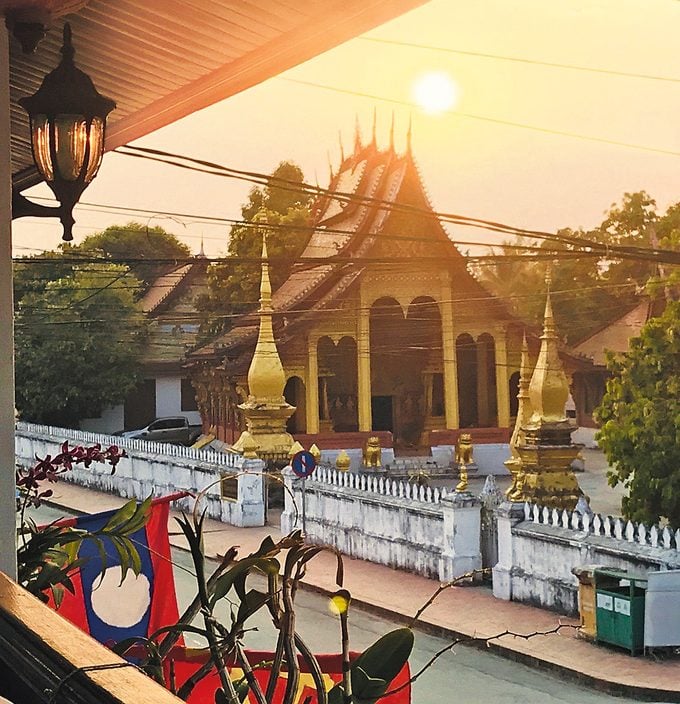
We called a trekking outfit in Phongsali on WhatsApp. “You might be able to get a riverboat,” the owner, Sivongxay, told us.
“But I’m not sure. Call me if you make it here and we’ll take you on a trek!”
So we would just head into the unknown? I’m the type who likes to plan my journeys, but the idea of travelling by river sounded very appealing. I tamped down my reservations and said to Jules, “Let’s give it a try.”
The local tourist office told us that any boat journey that might get us to Phongsali would be on the Nam Ou River. To get to the river, we’d need to take a four-hour minibus ride to a town called Nong Khiaw. Seemed reasonable.
“And from there?” I asked the young tourism officer.
“I think boats go north, but I don’t know how far,” she responded. We bought the minibus tickets anyway, for the next morning.
That evening in our guesthouse we hit Google to find out about boat rides on the Nam Ou. We had no luck. While there was decent information about the popular tourist regions of Laos, there was hardly anything about the country’s farther reaches.
One reason for this is that some areas are littered with unexploded bombs dropped by the Americans during the Vietnam War, as a deterrent to Viet Cong using the Ho Chi Minh Trail through eastern Laos. Nearly five decades later, the still-live bombs, partially or fully buried, remain a daily danger to farmers and road builders.
Our journey into the unknown had to start somewhere, and the first step was catching the minibus the next morning. We arrived in Nong Khiaw at about noon and walked to the riverboat ticket office. It was closed. But according to a schedule posted outside the office, a boat did head north once a day—and today’s had just departed.
There are worse places to be stuck for a night: Nong Khiaw, which had a population of around 3,500 at the time, was surrounded by misty, jungle-covered limestone karst formations. We spent much of the afternoon exploring the town. Later we found a guesthouse that served noodles and Beerlao, plugged our phone into their speaker system, put on Nova Scotia band Joel Plaskett Emergency’s Ashtray Rock and watched a mother washing clothes in the river while her kids splashed around, jumping to the beat of the music.
The next morning, we arrived at the boat office at 9:30. We were eager to find out how far these boats actually went and where in Laos we might end up sleeping that night. We learned that one leaving at 10:30 would take us to the village of Muang Khua, a five-hour journey.
Would there be another boat from there to Phongsali? We couldn’t get an answer, and our map of Laos, which was short on details, didn’t help. The map did have one important piece of information: Muang Khua had a tourist office. We were confident our questions would be answered once we arrived there that afternoon.
We took the front two seats of the blue wooden longboat and placed our packs at our feet; a dozen young backpackers piled into the boat and sat down behind us. Two hours later, at the first stop, everyone except us got off. With the entire boat to ourselves for the next few hours, we sat back to enjoy the rest of our journey.
And what a journey it was, like something out of an Indochina period film: The Nam Ou was wide, smooth and brown, and the clear sky had a misty quality above the lush banks. We munched on our packed lunch—water, apples and baguettes with Laughing Cow cheese—and sipped boxed red wine from our travel mugs as we slipped past tall, rounded karst landforms and quiet villages of bamboo huts where goats wandered the dusty lanes.
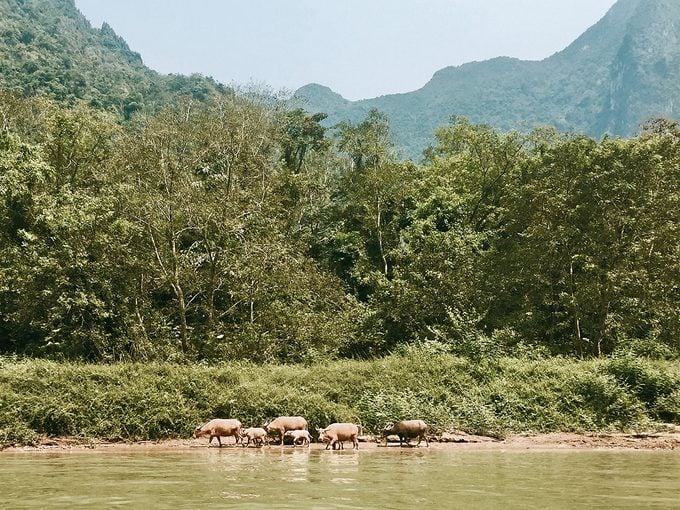
Children shrieked as they ran along the riverbanks in the shallow waters. Mud-covered water buffalo ambled down to cool themselves too. Women filled their woven baskets with the greens they grow on the edge of the river at this time of year, when the water is low.
It was truly a blissful, magical boat trip that we treasure even more now. Because although we didn’t know it at the time, we were among the last to experience this particular river journey, one that people had been taking for centuries. Just eight months later, in late 2017, a massive hydroelectric dam on this stretch of the river would be completed, ending a way of life for several villages whose lifeblood was the Nam Ou.
One by one, dams were being built along the river as part of the Belt and Road initiative, China’s massive international infrastructure program. Many villagers had been relocated, river transport was reduced to the short stretches between the dams, and fishing and local riverside agriculture had taken a hit, reducing local food resources.
We later realized that this was why we had so much trouble finding information about travel on the river: The dams were being built so quickly that it was hard for anyone who didn’t live in the area to know what stage each one was at.
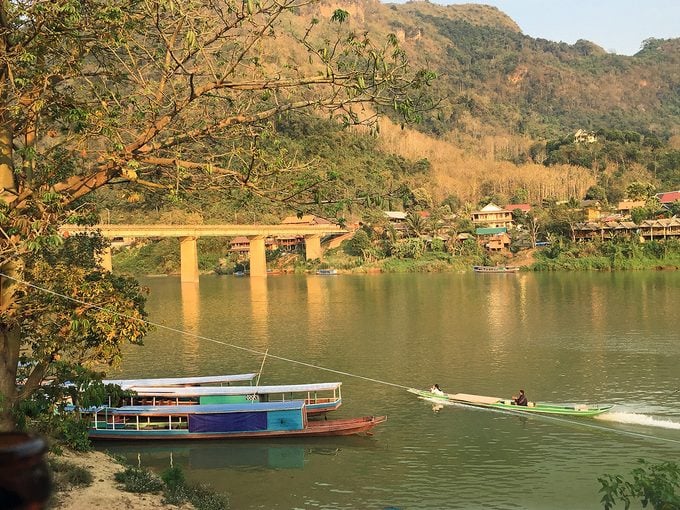
Just before 4:30 p.m. we stepped off the longboat at Muang Khua and walked up the steep road, packs on our backs, in search of the tourist office. We found it—just as the young woman who worked there was locking up. Uh-oh. Still hoping to travel onward that day, we asked, “Is there a boat to Phongsali? A bus?” She shook her head and pointed to a sign that said the tourist office would open at 8 a.m. the next day. We were staying the night.
Walking the dusty roads along with strutting chickens and the odd wandering dog, we came across a concrete bunker of a hotel, checked in, dumped our bags and went in search of a café where we might find other tourists we could ask about getting to Phongsali. We were in luck: At the only place in town with an English menu, we met a British couple in their 60s—and they had just come from Phongsali!
“Don’t take a boat any farther north,” the man warned. They had done it, but to get to the next stretch of the river, they had to bypass one of the massive new dams; they’d spent two hours in the back of a songthaew (a modified pickup truck) on a rough road, hanging on for dear life. The road was packed with heavy trucks loaded with building materials.
“We kept getting hit with gravel coming off the trucks,” the woman explained. “Once you get to the other side of the dam, there’s no guarantee a boat will be waiting to take you the rest of the way. If there isn’t, you’re sleeping on the side of the river.”
Instead, they said, we should take the eight-hour bus trip from Muang Khua to Phongsali. That definitely sounded better.
The next morning, we awoke to the sound of a tinny loudspeaker. It was blaring an authoritative female voice speaking in Lao and some really jarring marching music. We learned later that it was a daily update from the central Communist government.
We got to the tourist office at 8 a.m. on the nose. A dapper middle-aged man arrived and unlocked the door. Luckily for us, he spoke English. “Good morning!” I said with a hopeful smile. “What time is the bus to Phongsali?”
He looked at his watch. “It left at 7:30,” he replied. Jules and I stared at each other, crestfallen. It was the bus from Luang Prabang, the man explained (the 15-hour journey we had earlier decided not to take). It came just once a day.
Now what? “Time to call Sivongxay,” Jules said, referring to the trekking guide we were hoping to meet up with in Phongsali. “Maybe he knows another option.”
Sivongxay paused after Jules explained where we were. “I think there’s a bus that starts in Vietnam and goes through there,” he said. “It comes up here a few times a week. I don’t know if there’s one today. If there is, it’s maybe at noon? Or 2 p.m.? You have to flag it down.”
Full of doubt, but with nothing better to do, we walked to Muang Khua’s main street. Sivongxay had told us to look for a bus with a sign that said “Phongsali” on the front. (Would “Phongsali” be in English letters, Vietnamese characters or Lao script? And would the “bus” be a full- size coach, a minibus or a songthaew? We had no idea what to watch for.)
It was only 8:30 a.m. so we had hours to wait, maybe for nothing. We explored the town on foot, and later that morning we found a spot on the main street with some shade and two small plastic stools, complete with a litter of newborn puppies and their mother underneath. To pass the time, we read our books and drank thick, strong Lao coffee. We negotiated with a woman who lived nearby to use her outdoor bathroom—let’s just say it was rudimentary—in exchange for a few kip (less than one cent Canadian).
But mainly, as the sun moved across the sky, we kept an eye to the east—the direction of the Vietnamese border some 70 kilometres away—watching for buses. There were plenty of all shapes and sizes, most with Lao script on the front. As noon approached, Jules started jumping up to stop buses as they barrelled into town stirring up dust.
“Lodme Phongsali?” he asked the drivers, using the Lao word for “bus.” Each time, the driver shook his head and sped off.
We were pretty much resigned to staying on the plastic stools for the rest of the afternoon, knowing that the bus might not come and we’d be back in the concrete bunker that night. We grabbed a snack for lunch from a nearby vendor and settled in. Then things changed—fast.
Looking up as yet another bus approached, we couldn’t believe our eyes: The sign in the front window read “PHONGSALI.” But it was flying past us. We threw down our lunch, grabbed our packs and scrambled behind the bus, waving frantically in its dust. You can’t imagine our relief when it slowed to a stop.
“Lodme Phongsali?” we asked the driver in unison.
“Yes, each 40,000 kip,” he said— about C$5. After paying, we were waved onto the minibus packed with sacks of rice, construction materials and other goods from Vietnam.
It was the start of another journey into the unknown.
What followed felt like a visit to another planet. We arrived in Phongsali that evening, and the next day we met Zheng, a guide Sivongxay had hired for us. To start our trek to the Akha hill tribes’ region, Zheng (who spoke Lao, English and the Akha language) shepherded us onto a minibus for a half-hour ride to the edge of the Nam Ou River. Yes, we were returning to the same river that had taken us from Nong Khiaw to Muang Khua.
A longboat took us farther north, and we were dropped off after an hour or so at a muddy landing point. Then, with small packs on our backs, up, up we climbed in the sweltering heat through a thickly forested mountainside toward the clouds and the cooler air of the Akha villages, where the views over the green hills are misty.
Over the next three days, we saw no other foreigners. As arranged by Zheng, we stayed with local families in the villages we visited and learned about the traditional existence of the Akha—one in which the men hunt for food with slingshots while the women do just about everything else.
That includes growing cotton, turning it into thread, then using the thread to make fabric. After dying the fabric indigo, they make a long, embroidered jacket that, along with leggings and an elaborate headdress, they wear on their wedding day—and every day after that. The women’s tasks also include collecting water in huge bamboo pipes, which they lug on their backs up the steep hills.
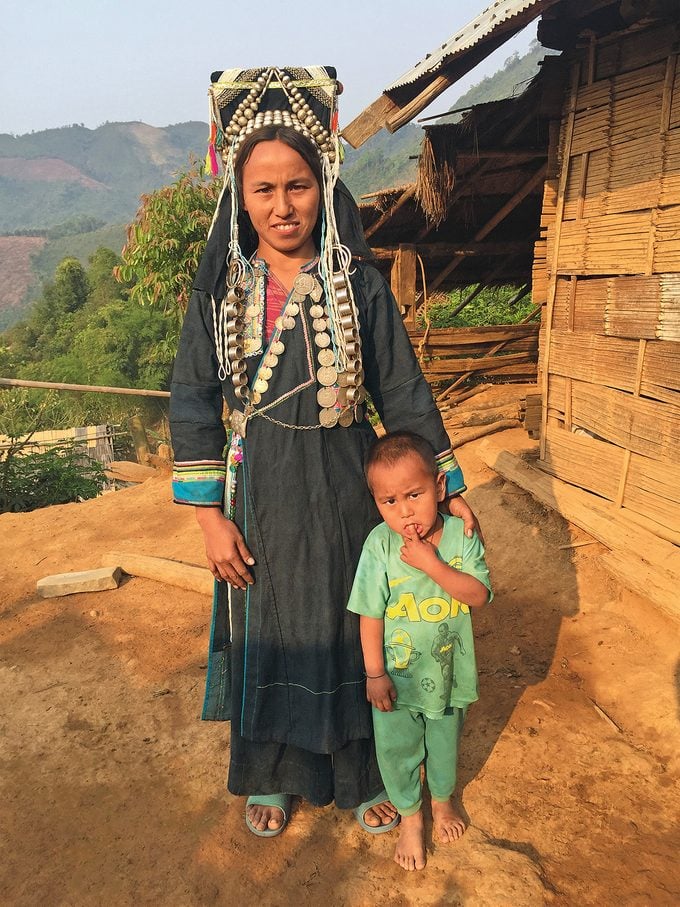
Bathing took place in the centre of each village, with designated hours for women and men to give everyone a measure of privacy. At least that was the theory. Neither Jules nor I was able to wash without drawing a crowd. We did our best to cover ourselves with towels.
Meals, which we ate at people’s homes, consisted of rice, foraged greens and whatever meat was available—often chicken, but we had squirrel soup for dinner once, seated on short stools on a dirt floor while pigs and chickens hovered nearby, waiting for scraps. (Jules was thankful for their services when a squirrel skull ended up on his spoon; he quietly deposited it on the floor behind him.)
To an outsider like me, the lives of the Akha people look difficult. Yet they are managing to keep their culture alive in the quiet hills, up in the clouds, and avoid being assimilated into mainstream Lao, Chinese or Vietnamese societies. Fortunately, in many villages the local chief has a motorbike, giving them access to markets and emergency healthcare when necessary.
I’m thankful to have travelled a lot in my life, and whenever I am asked about memorable trips, I always mention this one-of-a-kind, never-to-be-repeated experience. I am so thankful there was no railway, high-speed or otherwise, to northern Laos back then. Our snap decision to abandon our original plan for one that literally had no road map added a layer to life I didn’t realize I’d enjoy so much.
In the end, the journey was as rich as the destination. By willingly plunging into the unknown, I discovered what truly makes you feel alive: the surprises waiting around the next bend on a river less travelled.
Next, read about 20 of the greatest once-lost cities—and not just Machu Pichu and Pompeii.
